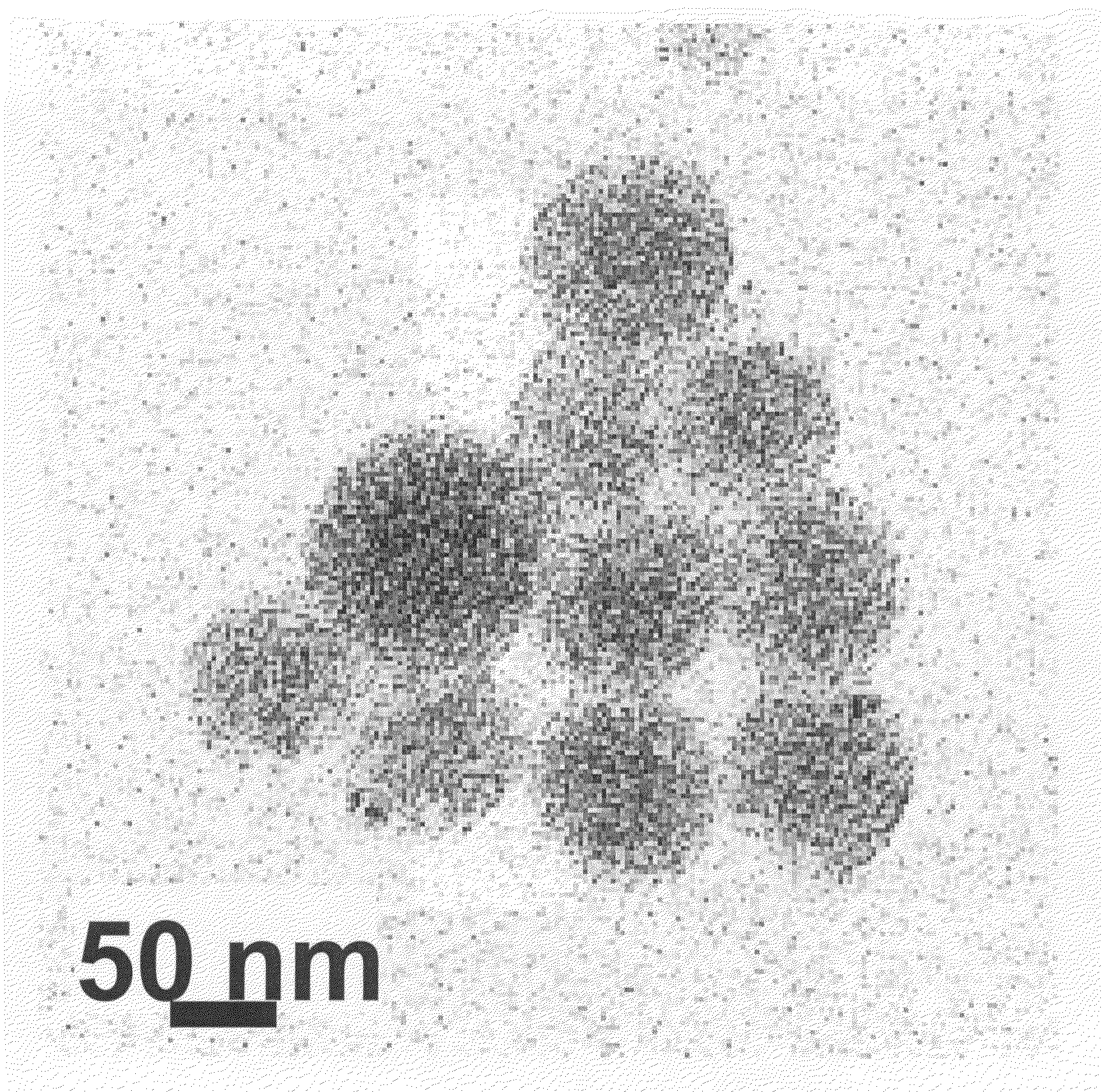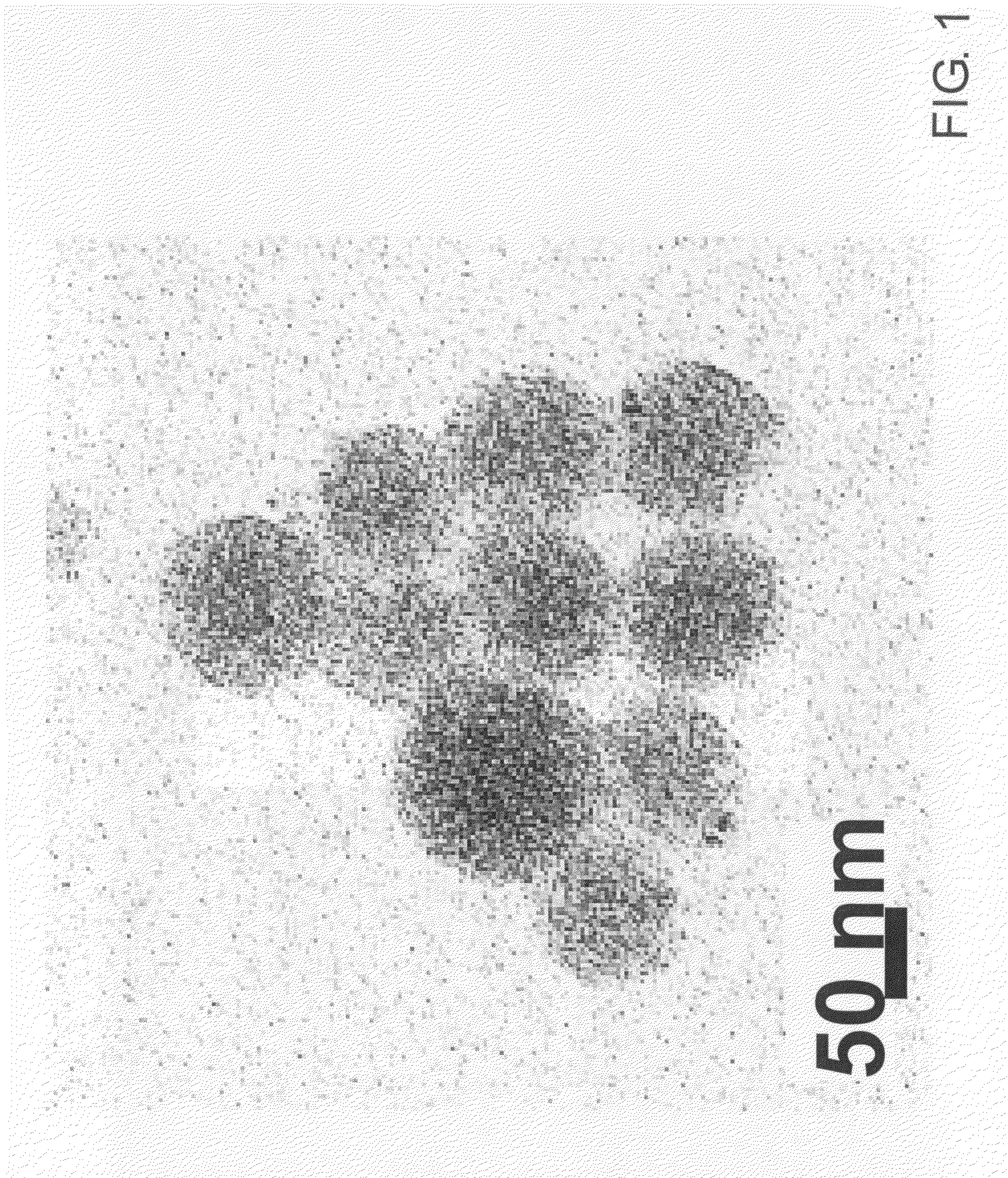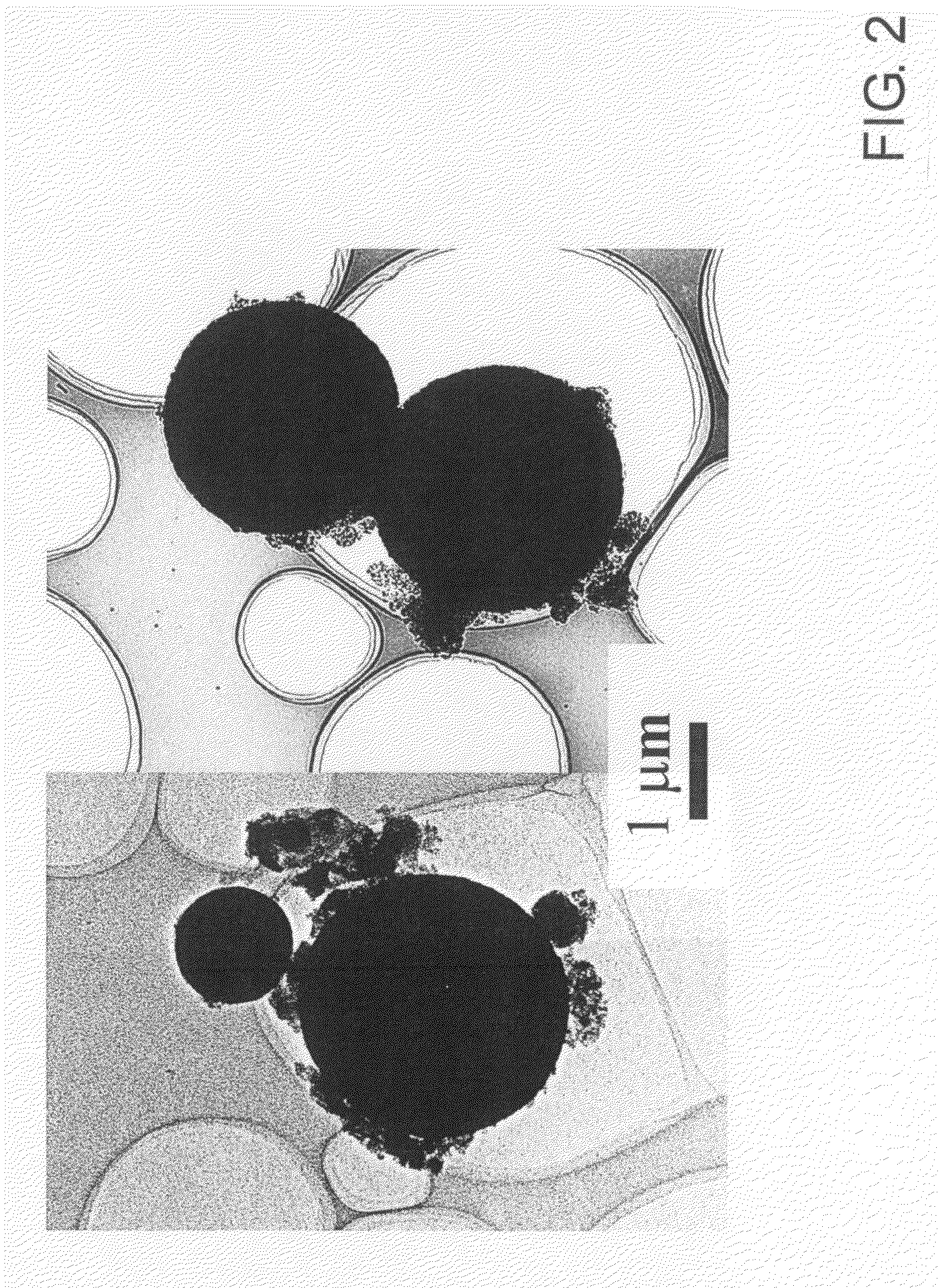Semiconductor-Nanoparticle-Dispersed Small Glass Particles and Process for Preparing the same
a technology of semiconductor nanoparticles and glass particles, which is applied in the field of small glass particles with dispersed semiconductor nanoparticles and process for preparing the same, can solve the problems of attracting attention, semiconductor nanoparticles whose fluorescence intensity reduction with time is small, and not always satisfactory in terms of brightness and color rendering properties, etc., to achieve excellent mechanical strength, increase fluorescence intensity, and excellent chemical stability against the external atmosphere
- Summary
- Abstract
- Description
- Claims
- Application Information
AI Technical Summary
Benefits of technology
Problems solved by technology
Method used
Image
Examples
example 1
[0118]II-VI semiconductor cadmium telluride nanoparticles were prepared according to the method described in Li, Murase, Chemistry Letters, vol. 34, page 92 (2005). More specifically, while vigorously stirring an aqueous solution of cadmium perchlorate adjusted to pH 11.4, hydrogen telluride gas was allowed to react in the presence of thioglycolic acid (HOOCCH2SH) as a surfactant under an argon gas atmosphere. Clusters of cadmium telluride were thereby produced in the aqueous solution, and this aqueous solution was refluxed under atmospheric pressure for 6 days, thus providing cadmium telluride nanoparticles having a mean particle size of 4 nm and emitting red light with an emission peak wavelength of 646 nm under UV excitation and with a fluorescence quantum yield of 81%.
[0119]The semiconductor nanoparticles thus obtained were dispersed and fixed in small glass particles by the combination of a reverse micelle process and a sol-gel process as described below.
First Step
[0120]While s...
example 2
[0138]II-VI semiconductor cadmium telluride nanoparticles were produced according to the method described in Li, Murase, Chemistry Letters, vol. 34, page 92 (2005). More specifically, while vigorously stirring an aqueous solution of cadmium perchlorate adjusted to pH 11.4, hydrogen telluride gas was allowed to react in the presence of thioglycolic acid (HOOCCH2SH) as a surfactant under an argon gas atmosphere. Clusters of cadmium telluride were thereby formed in the aqueous solution, and the aqueous solution was refluxed under atmospheric pressure for 2 hours, thus providing cadmium telluride nanoparticles having a mean particle size of 3 nm and emitting green light with an emission peak wavelength of 548 nm under UV excitation and with a fluorescence quantum yield of 35%.
[0139]By performing the first to third steps and fourth step (post-processing step) in the same manner as in Example 1 using the semiconductor nanoparticles thus obtained, a solution of cadmium telluride nanopartic...
example 3
[0149]II-VI semiconductor zinc selenide nanoparticles were produced according to the method described in Murase, Gao, Gaponik, Yazawa, Feldmann, International Journal of Modern Physics B, vol. 15, page 3881, (2001). More specifically, while vigorously stirring an aqueous solution of zinc perchlorate adjusted to pH 6.5, hydrogen selenide gas was allowed to react in the presence of thioglycolic acid (HOOCCH2SH) as a surfactant under an argon gas atmosphere. Clusters of zinc selenide were thereby produced, and this aqueous solution was refluxed under atmospheric pressure for several tens of hours to produce zinc selenide nanoparticles having a mean particle size of 3 nm and emitting bluish violet fluorescent light under UV excitation.
[0150]To reduce the surface defects of the nanoparticles and enhance the fluorescence quantum yield, the zinc selenide nanoparticles were dispersed in an aqueous solution containing zinc ions and thioglycolic acid, then adjusted to pH 10 to 11 and subjecte...
PUM
| Property | Measurement | Unit |
|---|---|---|
| mean particle size | aaaaa | aaaaa |
| mean particle size | aaaaa | aaaaa |
| quantum efficiency | aaaaa | aaaaa |
Abstract
Description
Claims
Application Information
 Login to View More
Login to View More - R&D
- Intellectual Property
- Life Sciences
- Materials
- Tech Scout
- Unparalleled Data Quality
- Higher Quality Content
- 60% Fewer Hallucinations
Browse by: Latest US Patents, China's latest patents, Technical Efficacy Thesaurus, Application Domain, Technology Topic, Popular Technical Reports.
© 2025 PatSnap. All rights reserved.Legal|Privacy policy|Modern Slavery Act Transparency Statement|Sitemap|About US| Contact US: help@patsnap.com



